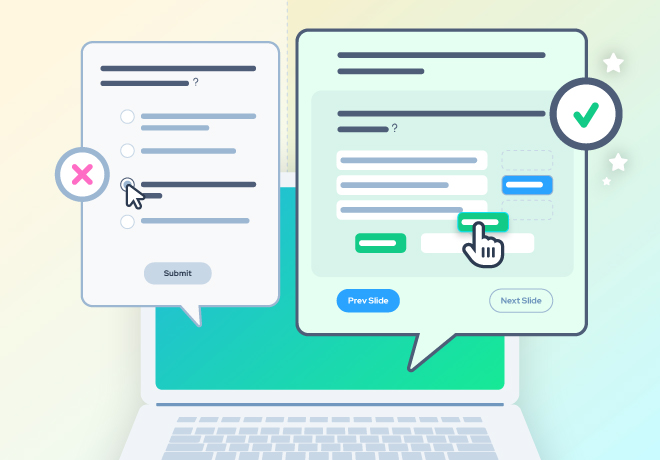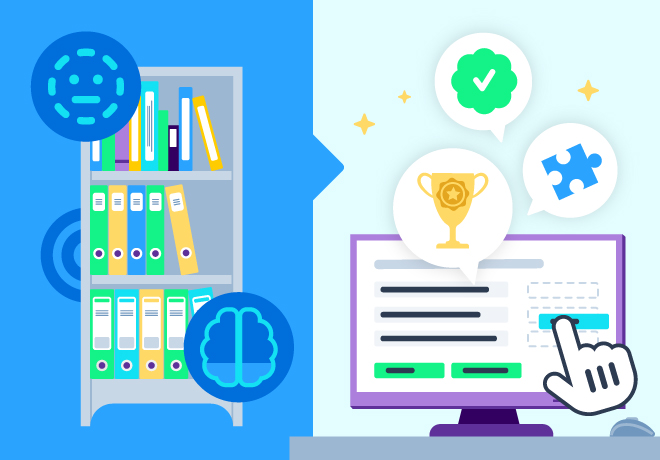
What is employee experience?

Related articles
Get valuable eLearning insights to your inbox.
Listen to Neovation’s Demystifying eLearning podcast generated with NotebookLM!
Listen to our podcast on your favorite platform!
Tight labor markets have sharpened many organizations’ focus on their employees’ experience.
So much so that employee experience or “EX” has become a hot buzzword for 2020.
A concept that emerged from a marketing focus on customer experience, EX comprises all the elements of the day-to-day experience workers have, from the physical environment to their ability to maintain a work-life balance to whether they find their work meaningful or feel that their organization nurtures a sense of belonging. That includes opportunities for development, especially training and upskilling.
The 2020 LinkedIn Global Talent Trends report, which found that 96% of talent professionals are focusing on EX, defined it as “everything an employee observes, feels, and interacts with as a part of their company” and emphasized that EX is distinct from engagement.
A positive employee experience leads to greater worker retention and higher productivity. According to MIT research, it also leads to increased customer satisfaction, higher profits, and more innovative organizations.
Elements of a positive EX

Employee experience is about:
- Relationships and interactions among colleagues, teammates, managers and workers, and workers and customers
- Physical work spaces no matter where the employee is located (in the office, at home, on the job site, etc.)
- Work options; a trend identified in the LinkedIn 2019 Global Talent Trends report, workplace flexibility, comes into play here, as does employees’ ability to find and maintain work-life balance
- Rules and norms for how work is done, organizational culture
- Tools and technologies employees use to do their work, including opportunities to learn to use new tools and technologies
- Whether an employee is a good match to their job role in terms of skill set and knowledge
- Whether the employee finds their work stimulating or challenging and meaningful
- Whether employees feel empowered to make decisions and solve problems
- Opportunities to upskill and take on new challenges
- Willingness of the organization to listen to and act on employee feedback
Good EX starts with the employee
It might sound obvious: Good EX starts with the employees — not the organization. Yet for decades, employee-employer relationships have been defined by organizations, top-down.
LinkedIn points to the power shift that occurs in tight labor markets: “As competition for talent tightened and workers became more skilled, power shifted from institutions to individuals.”
EX is bottom-up. It’s about what each employee values and needs to succeed. It’s also about making work meaningful for each employee.
The 2019 Deloitte Human Capital Trends report hammers that point home: “In order to create an enduring relationship, be social in nature, and create meaning, experience must come from and be focused on the individual.” That requires attention to individual employees’ psychological needs as well as practical needs for doing “their best work in the way that works for them.” These needs include doing work that an employee is good at and meeting social needs at work through relationships.
The ultimate goal is for each employee to create meaning in their job role, no matter how mundane. This requires an understanding of how what they do contributes to something of value, such as a positive customer experience.
Learning opportunities and EX

Opportunities to learn at work contribute to a positive employee experience. In fact, the LinkedIn report lists training as a “key EX component,” along with workplace flexibility, a purposeful mission, open and effective management, and highly rated compensation and benefits.
LinkedIn’s 2019 Workplace Learning Report found that “heavy” learners were more likely than employees who lacked training opportunities to find purpose in their work — and that 94% of workers whose companies invested in their learning and development would remain longer with that organization.
Be trendy — and win big
Build in training opportunities at your organization that improve learners’ skills and performance while also enhancing their EX. A focus on employee experience isn’t just a way to be trendy. It can help you hold on to your best workers and boost productivity and profits.

An experienced writer, editor, tech writer, and blogger, Pam helps you make sense of learning science and eLearning technology. She provides information you can use to drive improvements in your training effectiveness and ROI.
Become part of our L&D community
We publish a new learning hub article — full of useful, practical topics — weekly.
Not sure where where you want to start? Jump into one of our recently published articles and see where it takes you!








-svg.svg)
-svg.svg)
-svg.svg)
-svg.svg)